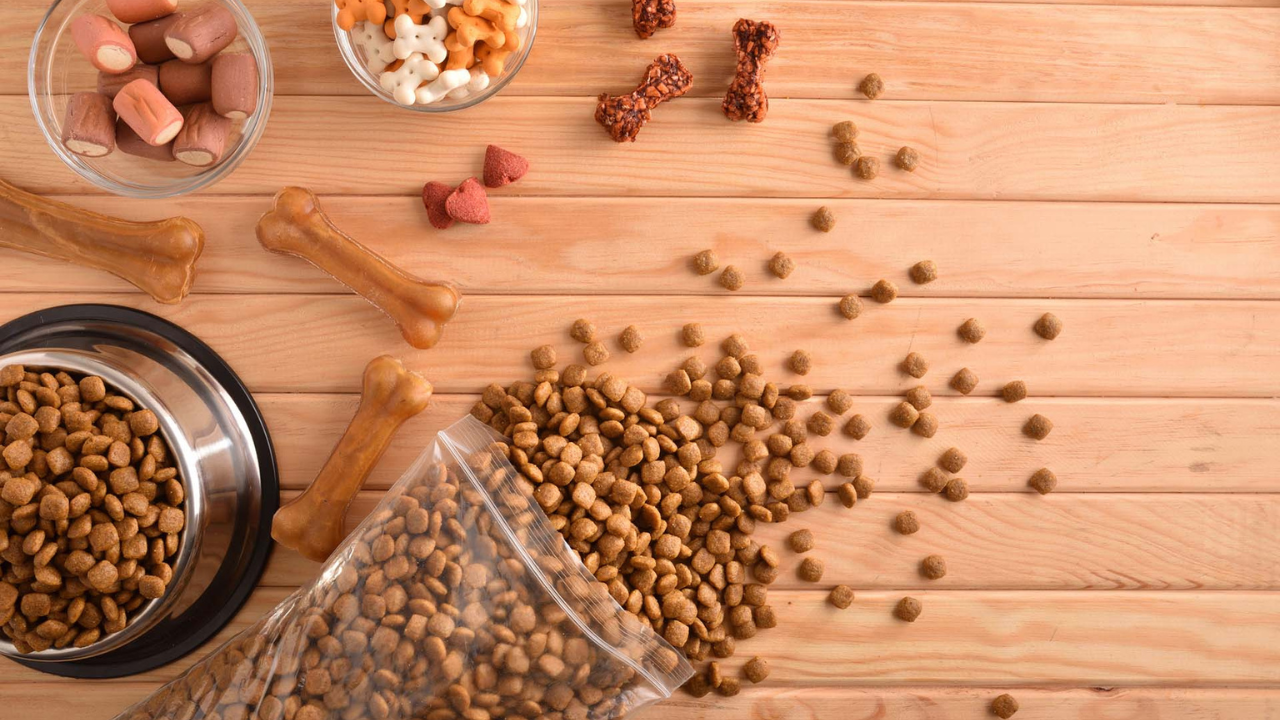Our pets are important members of the family. They love us unconditionally and completely rely on us to meet their needs. Simple things like giving them plenty of playtimes are some of their needs. However, choosing dog or cat food has become more challenging when selecting the right diet because of the wide range of products on the market. You can find the best pet foods in Pet Zone BD at the most affordable price. To ensure proper nutrition for our pets, it’s essential to know about the required nutrients and how they enrich pets’ health. This article will help you in understanding pet nutrition: essential nutrients and their roles so you won’t have to worry about your pet’s diet again!
Different Types of Pet Food
It might be difficult to choose the correct diet for your pet because there are so many different types of food in the market. The texture, nutritional content, flavor, and dietary requirements of each variety vary. The ideal diet for your pet will depend on his or her age, health, and nutritional preferences.
There are three different kinds of pet food: canned or wet, moist, and dry. Dry food, sometimes known as kibble, is a hard and crunchy snack. Even though it is typically the least-priced option, it could not appeal to finicky eaters, like many pets. A variety of dry, wet, and moist flavors can be found in abundance in seafood, lamb, cattle, and chicken.
Understanding Pet Nutrition: Essential Nutrients and Their Roles
The nutritional requirements of cats and dogs differ according to life stage, physical and mental health, and amount of activity. Although both cats and dogs are members of the Carnivora order, the dog has an omnivorous diet but the cat is a pure carnivore. Cats must therefore consume specific nutrients that can only be found in food derived from animals.
Your pet’s meal should have the proper amounts of proteins, lipids and oils, vitamins, minerals, carbs, and water. This vital nutritional balance should be provided by any high-quality dog food and cat food.
How the Nutrients Help Pets
Knowing the main advantages of each of these nutrients will help you choose the right foods for your pet. At Pet Zone BD, we are aware that it might be challenging to comprehend which nutrients are crucial for your pet and why. To help you confidently select the best food for your pet, we’ve broken down the five most essential nutrients, where they can be found, and the roles they play in cat and dog nutrition.
Protein
Along with carbs and lipids, protein is one of the key macronutrients found in a pet’s diet. Since protein is a source of energy as well as being essential for healthy growth, healing, and pregnancy, cats and dogs need a lot of it. Puppies and kittens, pregnant animals, and animals with certain illnesses may require more protein than healthy, adult pets due to these functions.
As long as the total amount of protein in the diet supplies all the essential amino acids in the right quantities, it doesn’t matter if the protein comes from one source or several components. Some sources of protein are:
- Meat
- Grains
- Seeds
- Legumes
- Vegetables
Carbohydrates
As they can make some of the types of carbs their bodies require from amino acids, cats and dogs can survive without eating carbohydrates. Yet, eating carbohydrates significantly enhances how well the body functions.
Except for blood glucose, the glycogen stored in muscles and the liver, and milk lactose, most carbohydrates are derived from plants. The following are some instances of carbohydrate sources:
- Plants containing fruit
- Berries
- roots or tubers include rice, corn, wheat, barley
- potatoes
- milk
Lipids
A family of chemical compounds referred to as fats are lipids. For dogs and cats, fats serve as their go-to energy source. These animals oxidize fats to produce the energy they require.
Lipids are a significant source of energy for cats and dogs when consumed in the proper amounts, just like proteins and carbohydrates. Certain fatty acids, which are referred to as “essential,” also play structural roles in cells or serve as precursors to particular hormones.
All foods high in animal and plant fats are dietary lipid sources. These sources comprise, among others:
- Bean oil
- grain oil
- Broom oil
- Oil of safflower
- Butter
- Tallow
- Lard
- Eggs
- Chicken fat
- fatty fish
Minerals
Macro elements are defined as minerals with high concentrations of calcium, phosphorus, potassium, sodium, and magnesium. Those that are present in trace amounts, or a few milligrams per kilogram (or parts per million), are crucial for the body’s proper operation (e.g. iron, zinc, manganese, copper, iodine, selenium).
A surplus of mineral salts harms digestion and may even have unexpected results. This is why formulating meals for cats and dogs requires a precise, nutrient-based approach.
Ingredients with a lot of minerals in them include:
- liver, duck, hog, lamb, or other types of meat
- Avocados
- Fish Cereals, grains, and wheat
- beans, soy, and peas
Vitamins
The two families of vitamins—those that are soluble in fats (known as liposoluble vitamins) and those that are soluble in water—are divided into (hydrosoluble vitamins).
Some of the crucial processes include the creation of blood cells and coagulation, defense against cell oxidation, control of the growth of epidermis cells (the skin’s outer layer), and sebum production.
- Liver, kidneys, and meat
- fatty fish
- Eggs
- dairy goods
- Cereals
- Vegetables
- Citrus fruit
- Berries
Why Understanding Pet Nutrition and the Roles of Nutrients is Important
Providing your pet with the right nourishment will help enhance their general health. Your pet may struggle to accomplish everyday tasks and stay energized, active, and healthy without a healthy and balanced diet. Find the best pet foods at Pet Zone BD!
It’s crucial to keep in mind that an excessive amount of any nutrient can be just as dangerous as a shortage in terms of how it affects the body. The exact ratio of nutrients may vary according to the breed, age, lifestyle, sensitivities, and health issues of your pet. Consult your veterinarian if you’re ever unclear about the nutrients your pet requires to sustain its health and well-being.
Read Next: Max Secure ltd best security guard service provider in Bangladesh




